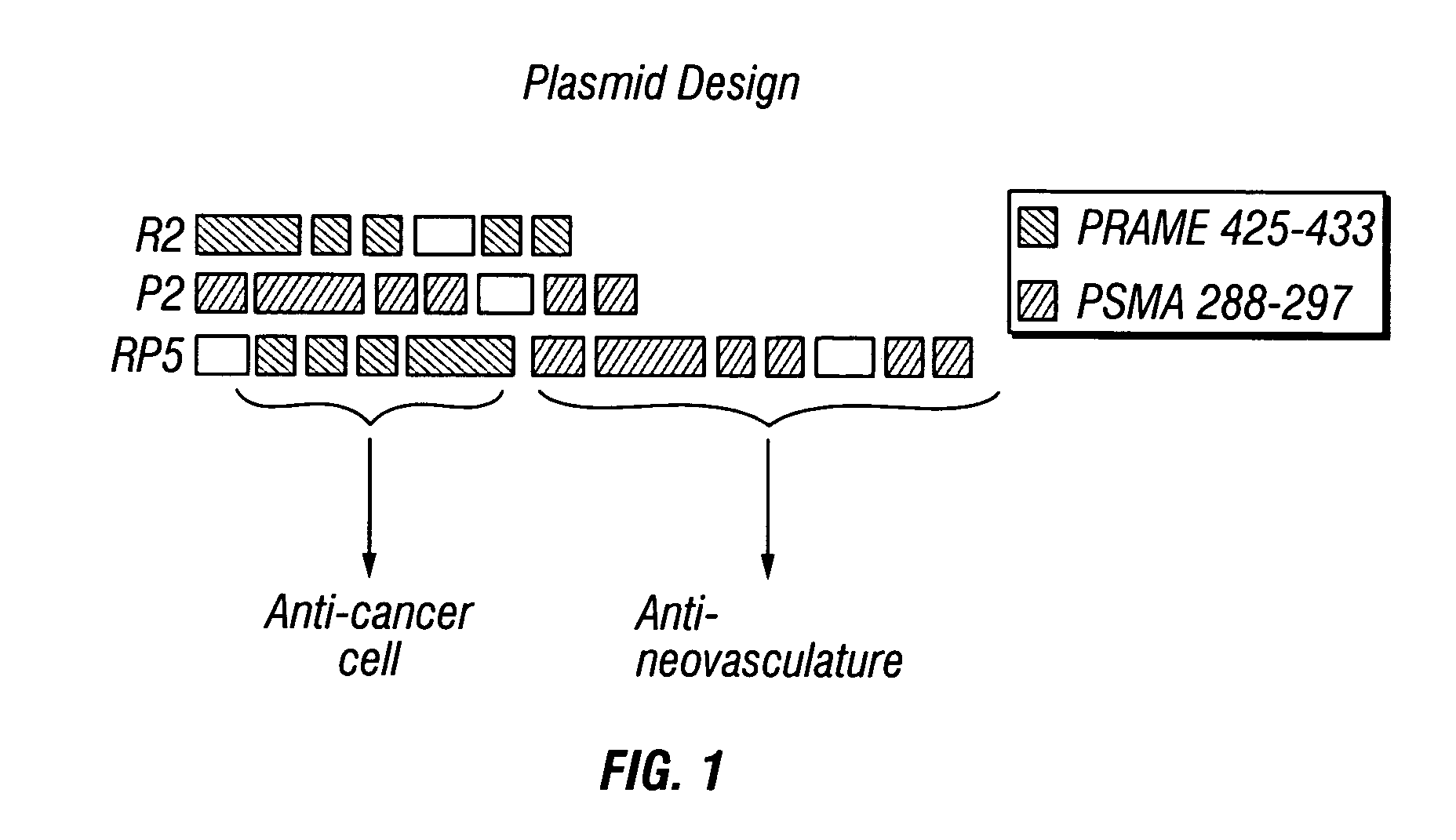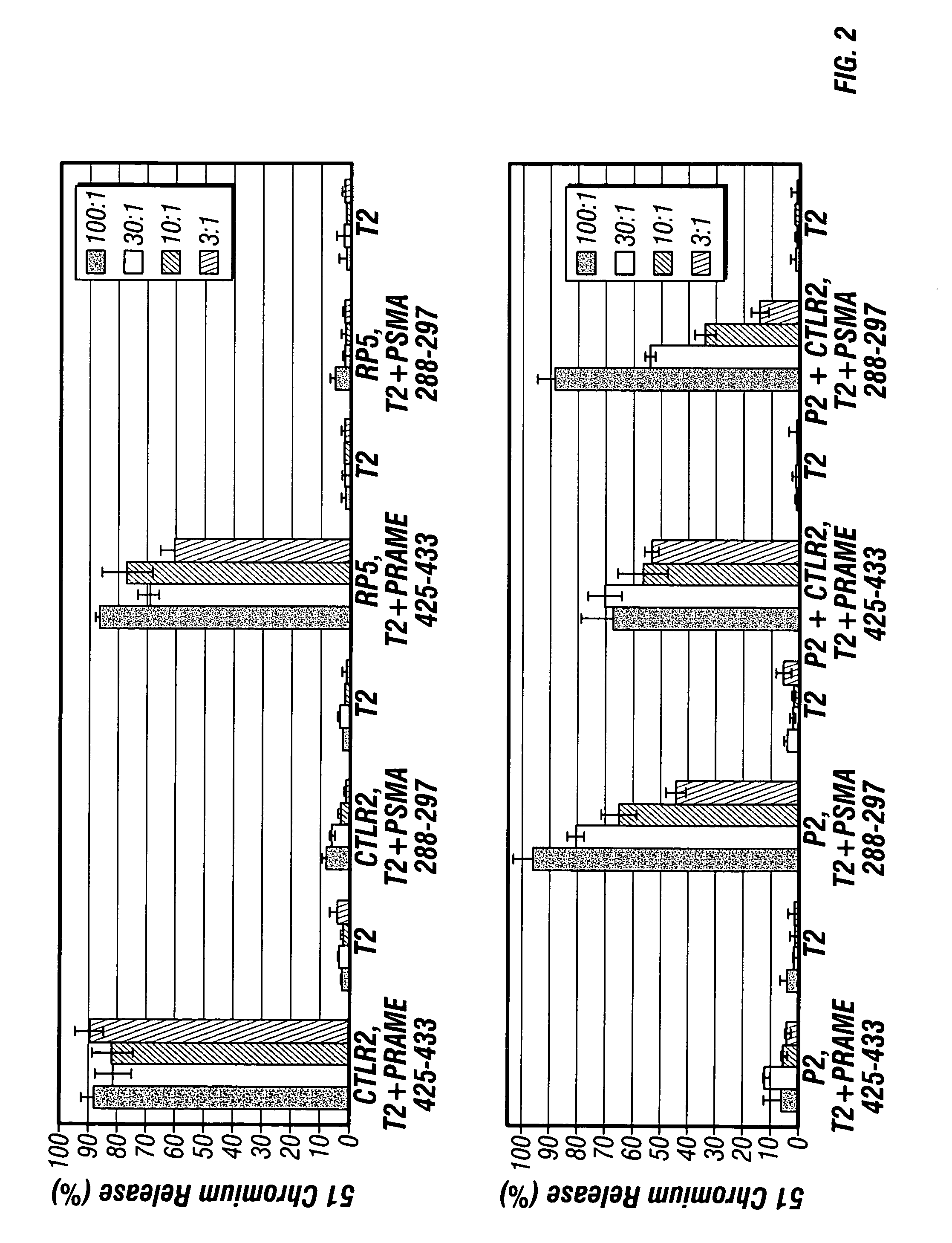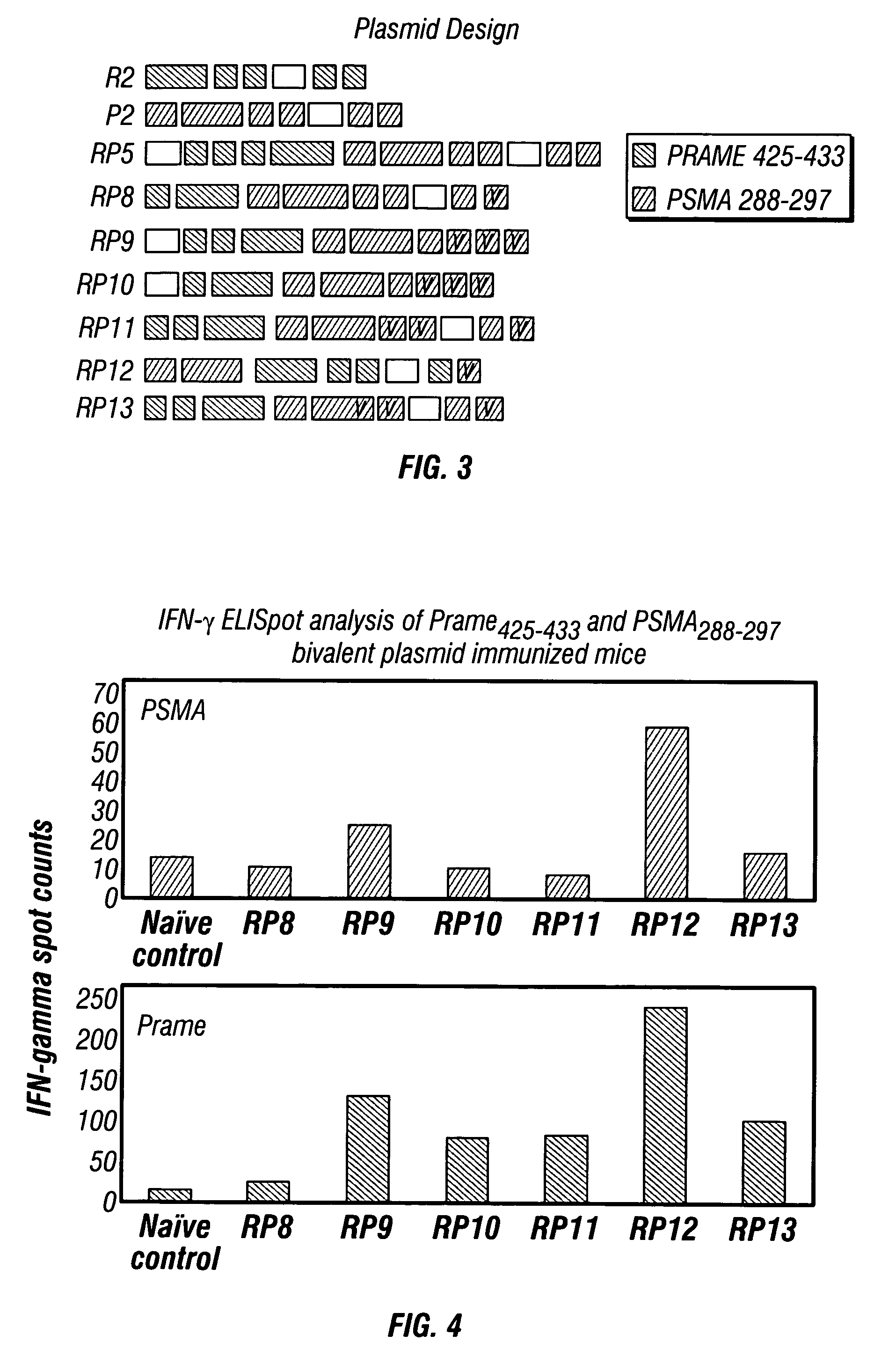Methods and compositions to elicit multivalent immune responses against dominant and subdominant epitopes, expressed on cancer cells and tumor stroma
a technology of immune response and composition, applied in the direction of antibody medical ingredients, tumor rejection antigen precursors, peptide sources, etc., can solve the problems of limiting the practical applicability of composite molecules for immunotherapy, neoplastic cells generally appear to be ignored by the host, etc., and achieve the effect of increasing the respons
- Summary
- Abstract
- Description
- Claims
- Application Information
AI Technical Summary
Benefits of technology
Problems solved by technology
Method used
Image
Examples
example 1
Design of Plasmid Expression Vectors Encoding Immunogens
[0094] The plasmids P2 and R2 (also referred to as pCTLR2) contain elements from PSMA (expressed on the neovasculature of a wide range of carcinomas or by prostate carcinoma cells) and PRAME (expressed by cancerous cells), respectively, (FIG. 1). Each insert encompasses a fragment of the antigen's sequence along with multiple copies of an epitope expressed by target cells and addressable via immune mediated attack. Flanking these epitopes are sequences encoding amino acids known to facilitate the processing and generation of epitope peptides in the cellular compartments. In addition, plasmid RP5 encompasses elements from both P2 and R2 with the expressed immunogens adjoined to each other.
[0095] The R2 plasmid was constructed following the plasmid construction protocol discussed above and as disclosed in U.S. Provisional Patent Application No. 60 / 691,889, filed on Jun. 17, 2005 entitled EPITOPE ANALOGS; and U.S. patent applica...
example 2
Dominant / Subdominant Hierarchy of Engineered Immunogenic Elements
[0098] A study was conducted to assess whether the strategy of engineering elements from different antigens into the same expression vector creates a dominant / subdominant hierarchy amongst those elements.
[0099] Four groups of HHD transgenic mice were immunized with plasmids P2, R2, RP5 or a mixture of P2 and R2 plasmids, by direct inoculation into the inguinal lymph nodes of 25 μg / plasmid in 25 μl of PBS to each lymph node at day 1, 4, 15 and 18. Ten days after the boost, splenocytes were stimulated ex vivo with PRAME425-433 or PSMA288-297 peptide and tested against 51Cr-labeled peptide coated-T2 cells, at various effector to target cell ratios (E:T ratio).
[0100] Briefly, target cells expressing antigen on their surface were labeled with a radioactive isotope of chromium (51Cr). Splenocytes were then mixed with the target cell and incubated for several hours. After incubation, supernatants were harvested and the cyt...
example 3
Structure of Additional Plasmids
[0103] To design expression vectors that result in a more balanced immunity against both PRAME and PSMA epitopes (dominant and subdominant in the context of RP5), a set of immunogens was designed and incorporated within the same plasmid backbone by employing various combinations of the three following methods: [0104] 1) The ratio between the copy numbers of the PRAME425-433 (dominant) epitope and that of the PSMA288-297 (subdominant) epitope was adjusted in favor of the latter. [0105] 2) The less dominant epitope was placed in the C terminal position so that it would have the proper C-terminus independent of proteasomal processing. [0106] 3) The less dominant epitope (PSMA) was mutated (one or multiple copies within the expressed insert) to improve intrinsic immunogenic properties such as binding to, and half-life on, class I MHC.
[0107]FIG. 3 shows the design of the various plasmids made. In FIG. 3, “V” corresponds to PSMA266-297 epitopes that carry...
PUM
| Property | Measurement | Unit |
|---|---|---|
| humidity | aaaaa | aaaaa |
| humidity | aaaaa | aaaaa |
| nucleic acid | aaaaa | aaaaa |
Abstract
Description
Claims
Application Information
 Login to View More
Login to View More - R&D
- Intellectual Property
- Life Sciences
- Materials
- Tech Scout
- Unparalleled Data Quality
- Higher Quality Content
- 60% Fewer Hallucinations
Browse by: Latest US Patents, China's latest patents, Technical Efficacy Thesaurus, Application Domain, Technology Topic, Popular Technical Reports.
© 2025 PatSnap. All rights reserved.Legal|Privacy policy|Modern Slavery Act Transparency Statement|Sitemap|About US| Contact US: help@patsnap.com



